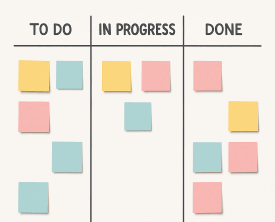The Power of Using Software in Job Planning and Job Scheduling
By Mark Ballance, Resource Scheduling Specialist at Schedule it Ltd since 2010.
Time and resources are invaluable and businesses and organizations are constantly seeking ways to optimize their operations. Job planning and scheduling are integral aspects of this optimization process.
The advent of advanced software solutions has revolutionized these processes, enabling companies to enhance efficiency, reduce costs, and increase productivity. This blog explores how software can effectively manage both job planning and job scheduling, bringing significant benefits to various industries.
1. Centralized Information Management: Software platforms provide a centralized repository where all relevant job planning data can be stored. This includes project details, resource availability, task dependencies, and timelines. This centralization ensures that all stakeholders have access to accurate and up-to-date information, promoting transparency and informed decision-making.
2. Resource Allocation and Optimization: Advanced software tools offer features that facilitate optimal resource allocation. By analyzing resource availability and skill sets, software can suggest the most suitable team members for each task. This minimizes the risk of overloading certain individuals while ensuring that tasks are assigned to those with the right expertise.
3. Task Dependency Management: Job planning often involves tasks that are interdependent. Software can create visual representations of task dependencies, making it easier to identify critical paths and potential bottlenecks. This enables project managers to allocate resources and time more effectively, reducing the risk of delays.
1. Efficient Task Sequencing: Software excels at sequencing tasks in an efficient and logical manner. By considering task priorities, dependencies, and resource availability, it creates schedules that minimize downtime and optimize productivity. This is particularly valuable in industries where timing is crucial, such as manufacturing and construction.
2. Real-time Updates: Changes are inevitable in any project. Software allows for real-time updates to schedules, accommodating unforeseen events or modifications. This agility ensures that the project remains on track even when facing unexpected challenges.
3. Conflict Resolution: Software can identify and resolve scheduling conflicts automatically. When two tasks are assigned conflicting resources or timelines, the software can suggest alternative arrangements or reassign tasks to avoid delays.
1. Enhanced Productivity: By automating routine tasks and optimizing resource allocation, software streamlines operations, leading to increased overall productivity.
2. Reduced Costs: Efficient job planning and scheduling translate to reduced labor and resource costs. The avoidance of conflicts and delays further minimizes financial losses.
3. Improved Communication: Software platforms foster better communication among team members by providing a clear overview of tasks, timelines, and responsibilities.
4. Data-Driven Insights: Software generates valuable insights from historical data, enabling organizations to identify trends, improve processes, and make informed decisions for future projects.
5. Time Savings: Manual job planning and scheduling can be time-consuming and error-prone. Software automates these tasks, freeing up valuable time for more strategic activities.
Software has emerged as a game-changer in the realm of job planning and scheduling. Its ability to centralize information, optimize resource allocation, and generate efficient schedules has transformed how businesses approach these crucial processes.
By embracing software solutions, organizations can achieve higher levels of efficiency, reduce costs, and ultimately deliver projects with greater precision and success. As technology continues to advance, the synergy between human expertise and software capabilities will undoubtedly shape the future of job planning and scheduling across industries.
The advent of advanced software solutions has revolutionized these processes, enabling companies to enhance efficiency, reduce costs, and increase productivity. This blog explores how software can effectively manage both job planning and job scheduling, bringing significant benefits to various industries.
Understanding Job Planning and Scheduling
Job planning involves determining the scope, resources, and timeline required for completing a task or project. It encompasses defining the objectives, allocating resources, and creating a comprehensive strategy to achieve the desired outcomes. On the other hand, job scheduling involves assigning specific tasks to resources, taking into account their availability, skills, and dependencies. Effective job scheduling ensures that tasks are executed in a logical sequence, avoiding conflicts and delays.The Role of Software in Job Planning
The Impact of Software on Job Scheduling
Benefits of Software-Driven Job Planning and Scheduling
Software has emerged as a game-changer in the realm of job planning and scheduling. Its ability to centralize information, optimize resource allocation, and generate efficient schedules has transformed how businesses approach these crucial processes.
By embracing software solutions, organizations can achieve higher levels of efficiency, reduce costs, and ultimately deliver projects with greater precision and success. As technology continues to advance, the synergy between human expertise and software capabilities will undoubtedly shape the future of job planning and scheduling across industries.
Try Schedule it Free
No credit card required. Capterra/G2











